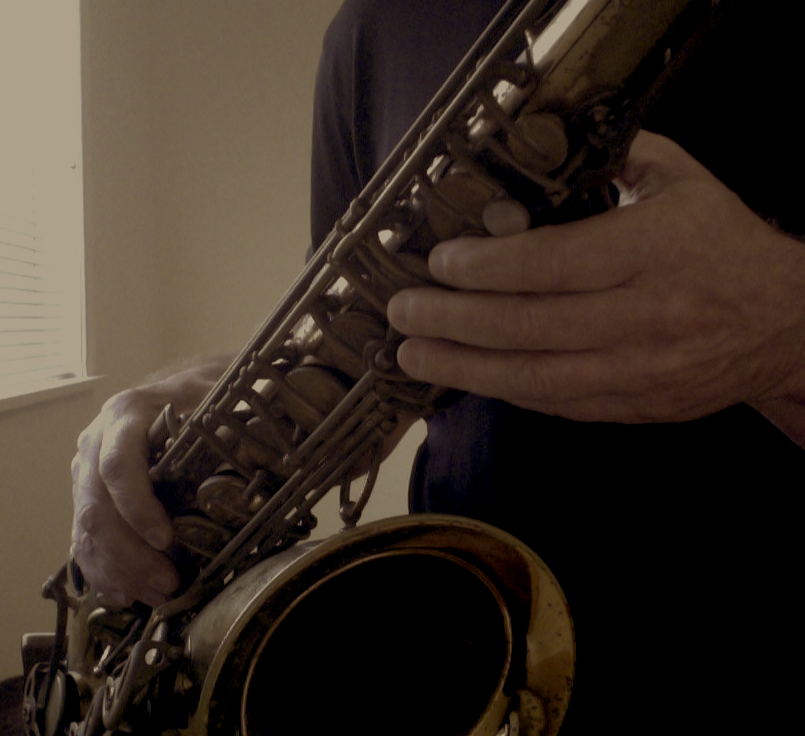Recently I was reading a thread on a Facebook page (for saxophonists) about chronic pain. The thread started out asking about the value of chiropractic work for musicians, then quickly morphed into a discussion of the merits and/or shortcomings of various modalities to address pain and injury.
Lots of experiences, opinions and ideas were offered up. Several of the participants stated that chiropractic was not addressing the root cause of the problem. They thought that simply manipulating the bones neglected the deeper issue of muscles, fascia, etc. (I don’t necessarily agree with this, by the way).
Others talked about the the value of a good physical therapist to address muscle imbalances and flexibility issues. Deep tissue work was endorsed with great enthusiasm by others. Iyengar Yoga, Pilates, Myofascial Release, and other therapeutic work were also mentioned.
The thrust of the discussion was about getting to the root cause of chronic pain. Lots of debate about the hierarchy of importance of the structures of the body (bones, nerves, muscles, fascia, joints, discs, etc.) in preventing pain and injuries.
Yet nobody once mentioned the real root cause of most chronic pain and injury: Habit.
Your habits of thinking determine your habits of posture and movement. Period. You move and maintain posture in accordance to your conscious (and even unconscious) thoughts. And what predominately causes pain and injury for musicians (and others, as well) are dysfunctional postural and movement habits.
When you practice your instrument, you’re repeating movement patterns over and over, hundreds of times in a single session. If you’re doing this in an overly tense and unnatural way, you’re going to invite problems.
To be clear, I think there is a great value in the majority of the modalities that were discussed above. Without a doubt, manipulative work (massage, chiropractic, acupuncture, Myofascial Release, etc.) can be highly effective for ending the pain by bringing the structures of the body back into a healthy balance. It’s often a great place to start to get quick relief from pain.
Well prescribed exercise (Yoga, Pilates, etc.) can also help to change the structural organization of the body, which can help significantly in the long run.
But ultimately, unless you change how you maintain balance, posture, and how you move in general (with and without your instrument) throughout your daily activities (i.e., change your habits), chances are good that you’ll eventually return to having the exact same kinds of structural problems you had before treatment (or exercise program).
So what are your choices? You can continue to get the same treatment, viewing it as a kind of “maintenance” for your pain. You can try a new form of treatment or exercise and see if that makes a lasting difference.
Or you can learn to change the habits that are causing your pain. You can learn to replace tense, harmful movement with light, safe and easy movement.
Besides being a professional saxophonist, I’m also a certified teacher of the Alexander Technique, and I’ve found this Technique to be the most effective way I’ve yet to discover to make lasting changes in postural and movement habits. If it weren’t for this work, I would no longer be able to play saxophone. As it is, I’m playing better than ever. Completely pain and dysfunction free.
You see, the Alexander Technique goes right to the root of the problem: your habits and the thinking that shapes them. A qualified teacher can help you to become aware of the various harmful postural and movement habits you have, and give you the tools to prevent them, so you can make lasting changes for the better.
You’ll learn a new way to think about how you move, how you sit, stand, hold your instrument, use your breath, and more. You’ll clarify misconceptions about your body, and discover a way to move with far less effort and a minimum of strain. You’ll learn to move in accordance to the natural design of your body.
You’ll learn self-care strategies to rest your body and and restore your spine. You’ll even learn how to be calmer and more clear-thinking as you practice and perform music (or carry out any other activity, for that matter).
But most important, you’ll unlearn the habits that are causing the harm (the nagging truth about your chronic pain).
Sound too good to be true? It’s not. It does involve responsibility on your part, and a considerable amount of time and persistence (after all, you’ve spent a lifetime learning your habits). But it does work. Very well. One of my greatest satisfactions in life is seeing all the musicians I’ve been able to help by applying the Alexander principles.
Even the prestigious Juilliard School of Music knows the value of the Technique, and integrates it into its program to help serious musicians play pain-free and avoid injury.
So if you’re struggling with chronic pain, or suspect you have an injury, make sure you see a qualified physician first. It’s important that you rule out any kind of disease or other kinds of damage that must be addressed directly through medical means.
Ask your physician if any of your problems could be caused by dysfunctional movement and/or postural habits. If the answer is yes, then remember that you have a choice. Consider finding a certified Alexander Technique teacher in your area, and commit to taking some lessons. You can change. I have. So have my students. And for us, playing music is pure, pain free joy!
